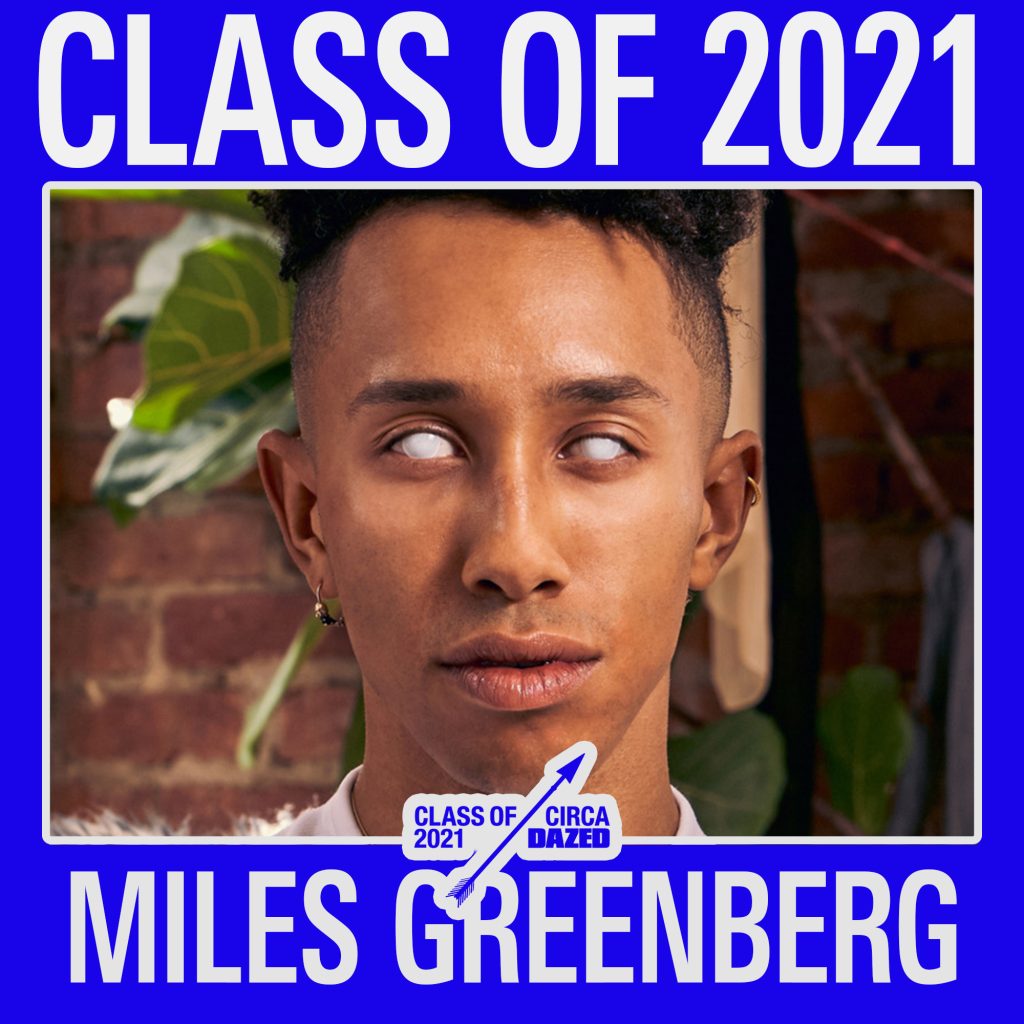Miles Greenberg
Performance artist, sculptor and researcher of the corporal movement based in New York. His practice centres around explorations of the body in space, pushing its limits through durational performance and sculptural form. His work consists of large-scale sensorially-immersive environments which revolve around the physical body. At age seventeen, Greenberg left formal education and threw himself into a four-year independent research project studying movement and architecture as they relate to Black bodies. This spanned a number of residencies including École Jacques Lecoq and Musée du Palais de Tokyo in Paris, Red Gate Gallery Beijing and Long Island’s Watermill Center. He has a largely self-acquired background in linguistics, perfumery and physical theatre, and has studied under the direction of various mentors such as Édouard Lock, Robert Wilson and Marina Abramović. Greenberg’s form is the result of rigorous methodology which resides at the threshold of performance and sculpture. The work follows self-contained, nonlinear systems of logic which are best understood in relation to one another.
Q: WHAT WAS YOUR ROUTE TO YOUR CURRENT ARTISTIC PRACTICE?
My mother was an actress in a Russian absurdist theatre troupe and she never sent me to daycare. My earliest memories are from being on a tour bus in Europe full of Russian clowns and bouffon actors. When I was thirteen she took me to see The Artist Is Present at MoMA and this is how durational performance entered my life. After dropping out of school at seventeen, I interned for Edouard Lock in Beijing and subsequently lived there for six months in a residency. I then moved to Paris to go to École Jacques Lecoq where I studied movement and architecture.
Q: CAN YOU IDENTIFY ANY ELEMENTS OF YOUR COMMUNITY OR COLLABORATORS THAT HAVE HAD A STRONG INFLUENCE?
I love how unafraid Bob Wilson is of enormous amounts of empty space onstage. It’s easy to add and add out of fear, it’s more challenging to do less. I try to allow for this in my own work when possible as well. Bob is a master at breaking down an idea to its purest essence. I like to think of this as allowing space for the audience to dream.
Q: HOW IS YOUR PROJECT TIED TO THE CIRCA X DAZED CLASS OF 20:21 THEME OF ‘COMMUNION’ ?
Late October was a seven hour piece created in the midst of COVID, originally performed at Galleria Continua in Les Moulins, just outside of Paris. While we of course followed all the appropriate regulations applicable at the time, it was the first time many of the performers had interacted with people outside of their nuclear circles in months. It was a real social experiment in this way. When I rewatch the footage from the one-on-one ‘fight scenes’ in the performance, I think the urgency that was expressed by each performer was completely real; there was a palpable thirst for human touch, for discovering the unknown of another’s body in a distilled and unrehearsed context. Almost all of the performers were people I’d worked with individually in the past, but they were all relative strangers to one another. This added a layer of experimentation that I found very interesting because you could see a communal dynamic being born naturally and nonverbally onstage as the piece unfolded.
Q: HOW WOULD THE CIRCA PRIZE OF £30,000 IMPACT YOUR FUTURE PRACTICE?
The two biggest challenges in making immaterial work are (1) having the work be taken seriously in institutional settings, and (2) being considered commercially viable in for-profit settings. Performance artists are so often relegated, in one way or another, to being accessories to other supposedly more serious artforms, but I think the art I make is completely serious. I’m currently at a stage in my career in which I’m developing the conversation around my work and establishing proof of concept, to the public and to institutions, that the work I’m making is just as important as painting or sculpture. I think this conversation is rapidly evolving, and as it does, my work is also becoming increasingly interdisciplinary.
That being said, Late October in particular is a perfect example of what remains at the nucleus of my practice, which is the durational, the corporal, and the immaterial. As an artist whose primary medium makes it such that I often have little to sell, it would be an opportunity to have my artistic endeavours recognized monetarily in a very substantial way. To have this work recognized by the CIRCA PRIZE would be an enormous step forward for me in creating visibility and legitimacy around my art practice, as well as giving me the opportunity to further expand it.
FOLLOW MILES GREENBERG ON INSTAGRAM
